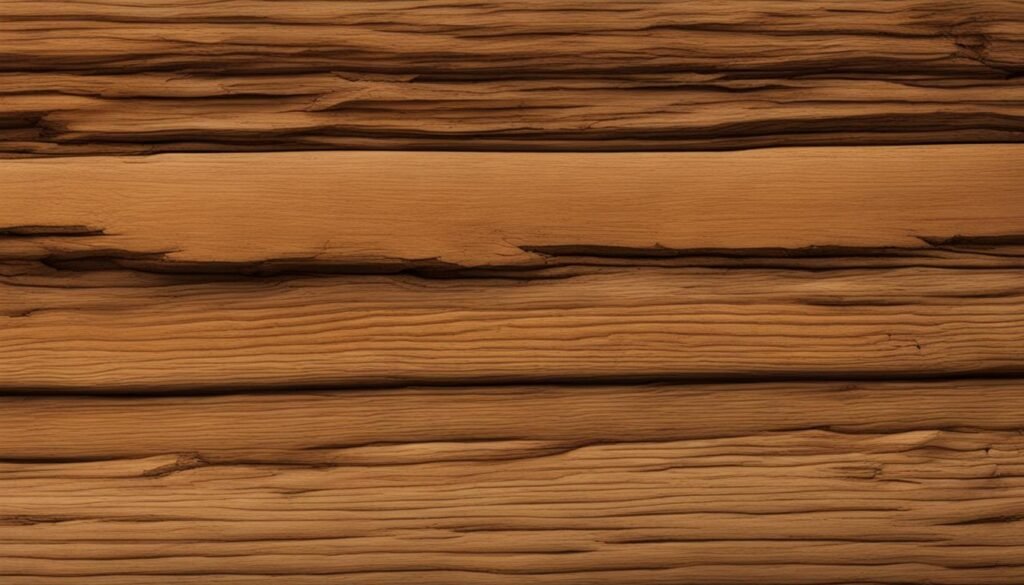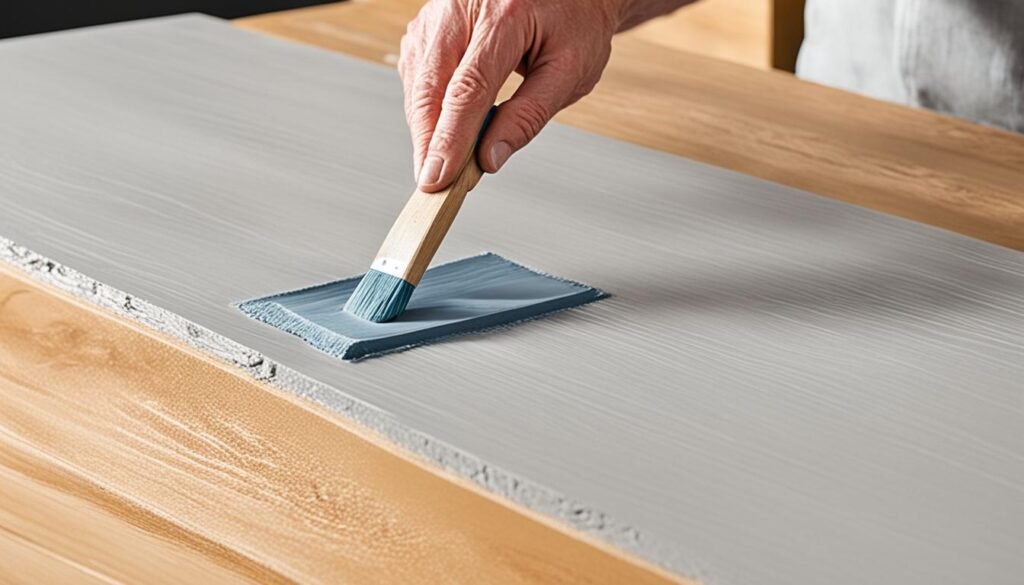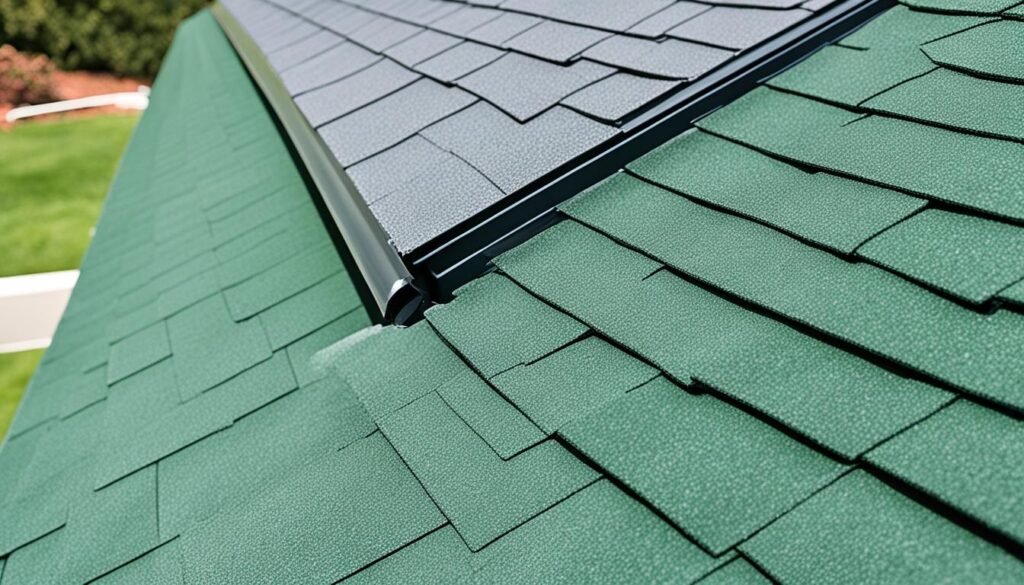Are you working on a woodworking project that requires staining? Finding a suitable wood filler for staining is essential to achieving flawless results. Whether filling small holes or more significant gaps, a high-quality stainable wood filler can help you achieve a seamless finish that blends beautifully with the rest of your woodwork.
After comparing seven popular wood fillers, we have determined the best wood filler for staining – a Minwax Stainable Wood Filler. This top-rated filler consistently delivers excellent staining results on oak and pine lumber, making it a versatile choice for multiple wood types. Not only does it stain well, but it’s also effortless to apply, ensuring a smooth and professional-looking finished product.
While Minwax Stainable Wood Filler takes the top spot, other contenders for the best wood filler for staining include Gorilla High-Performance Wood Filler. However, it’s worth noting that Bondo Wood Filler and Dap Plastic Wood-X have strong and unpleasant odors.
Minwax Stainable Wood Filler offers the best color match for oak before staining, while Dap Plastic Wood-X excels in pine. For larger holes, Minwax proves to be the most effective in terms of color and consistency.
When selecting a stainable wood filler, ensure it is labeled as “stainable” to guarantee successful staining results. Additionally, consider factors such as compatibility with both water-based and oil-based wood stains, minimal shrinkage to prevent divots or cracks, durability for outdoor projects, and ease of application and standability for a smooth and seamless finish.
Now that you know the best wood filler for stained wood, you can confidently embark on your staining projects and achieve flawless results every time.
What is Stainable Wood Filler and How Does It Work?
Stainable wood filler is a specific type designed to absorb wood stains. It is ideal for filling holes, gaps, and cracks in wood surfaces when staining the wood. Made from a combination of wood particles or sawdust and a binding agent like latex, epoxy, or cellulose, stainable wood fillers are formulated to seamlessly blend with the surrounding wood once stained, resulting in a uniform and flawless finish.
Whether you’re working on stained furniture, filling holes in preparation for staining, or any project that requires a stainable surface, using a suitable wood filler is crucial. Stainable wood fillers offer strength, flexibility, and stain absorption, providing a durable and attractive result.

How to Choose the Right Stainable Wood Filler
Choosing the best wood filler for stained wood is essential for achieving a flawless, long-lasting finish in your woodworking projects. Here are some crucial factors to consider when selecting a suitable stainable wood filler:
Stainability
Ensure that the wood filler is explicitly labeled as stainable. This guarantees that it is formulated to effectively absorb wood stains, allowing for a seamless blend with the surrounding wood. Look for fillers compatible with water- and oil-based wood stains, offering flexibility in your staining choices.
Wood Compatibility
Consider the type of wood you are working with, as different fillers may perform differently on various wood species. Some fillers are specifically formulated to match specific wood colors and grain patterns, resulting in a more natural and consistent finish. Choose a filler that closely matches the color and tone of the existing stain if you’re working with stained furniture for a cohesive look.
Shrinkage
Check the filler’s shrinkage rate before purchasing. Opt for a filler with minimal shrinkage to prevent divots or cracks from appearing after drying. A high-quality stainable wood filler will dry evenly and maintain its shape and integrity over time, ensuring a professional-looking result.
Durability and Weather Resistance
If your project will be exposed to outdoor elements, ensure the wood filler is durable and weather-resistant. Look for fillers designed to withstand moisture, UV rays, and temperature fluctuations to prolong the lifespan of your stained woodwork and maintain its beauty over time.
Ease of Application and sandability
Consider the ease of application and standability of the wood filler. Choose a filler that is easy to spread and work with, allowing for smooth and seamless application. Look for an easily sandable filler, enabling precise shaping and blending with the surrounding wood surface for a professional finish.
By carefully considering these factors and selecting a suitable stainable wood filler, you can achieve flawless results and create beautiful stained woodwork that will stand the test of time.
How to Apply Stainable Wood Filler for Best Results
Proper application is critical to achieving the best results with stainable wood filler. Follow these steps for flawless results.
1. Prepare the Wood Surface
Start by sanding the wood surface to remove imperfections and create a smooth base for the wood filler. Use sandpaper with a grit appropriate for the project and sand in the direction of the wood grain.
2. Clean the Area
Thoroughly clean the area to ensure proper adhesion of the wood filler. Remove any dust, debris, or grease that may be present. A clean surface will allow the filler to bond securely to the wood.
3. Apply the Wood Filler
Using a putty knife, apply the stainable wood filler to the holes or gaps that need to be filled. Press the filler firmly into the area, ensuring it fills the space. Overfill slightly to account for shrinkage and sanding.
4. Allow the Filler to Dry
Follow the manufacturer’s instructions for the drying time of the wood filler. Allow the filler to fully dry and cure before proceeding to the next step. This ensures a solid and stable surface for further finishing.
5. Sand the Filler
Once the filler is completely dry, sand it until it is flush with the surrounding wood. Sand gently, back and forth, blending the filler with the wood for a seamless finish. Use a finer grit sandpaper for a smoother result.
6. Remove Sanding Dust
Clean the surface again, this time focusing on removing any sanding dust. Use a clean or tack cloth to wipe away the dust, ensuring a clean surface for the final steps.
7. Apply Wood Stain
After cleaning the surface, it’s time to apply the wood stain of your choice. Follow the manufacturer’s recommendations for drying and curing times. Apply the paint evenly, using a brush or cloth, and let it penetrate the wood for the desired time.
By following these steps, you’ll be able to achieve professional-looking results with stainable wood filler. Proper preparation and attention to detail are essential to a flawless finish.

Evaluation of Stainable Wood Fillers
We evaluated seven stainable wood fillers in a recent comparison test, including five store-bought options and two homemade alternatives. The evaluation criteria included ease of application, standability, and the fillers’ ability to absorb different wood stains.
Top Performer: Minwax Stainable Wood Filler
The Minwax Stainable Wood Filler emerged as the top performer in our evaluation. This wood filler consistently produced excellent staining results and proved easy to apply. Its smooth texture and compatibility with various wood stains make it an ideal choice for DIY enthusiasts and professional woodworkers.
Runner-Ups: DAP Plastic Wood and Elmer’s Carpenter’s Stainable Wood Filler
DAP Plastic Wood and Elmer’s Carpenter’s Stainable Wood Filler also performed well in our test. While these options delivered satisfactory staining results, some users noted minor texture and color-matching issues. However, they still offer reliable performance and are suitable for various woodworking projects.
Satisfactory Options: Goodfilla Wood Filler and FamoWood Latex Wood Filler
Goodfilla Wood Filler and FamoWood Latex Wood Filler provided satisfactory results in our evaluation. While they may not offer the same level of performance as the top performers, they still provide decent staining capabilities. They suit smaller woodworking tasks or projects where precision isn’t paramount.
Homemade Alternatives
The homemade wood fillers, while cost-effective, did not perform as effectively as their store-bought counterparts. They struggled to match the staining results and consistency offered by the commercial options, highlighting the importance of investing in quality wood fillers for optimal results.
Conclusion
Selecting a suitable stainable wood filler is crucial for achieving professional-looking results in woodworking projects. Based on our evaluation, the Minwax Stainable Wood Filler is the top choice, offering excellent staining performance and ease of application.
However, other options, such as DAP Plastic Wood and Elmer’s Carpenter’s Stainable Wood Filler, may also be suitable depending on your specific project requirements and preferences. When choosing the best wood filler for your next woodworking endeavor, consider application ease, standability, and stain absorption capabilities.
Author
-

Hey there! I'm Andrew Reed, and I live for the thrill of writing reviews. Dive into my world at bestfordaily.com, where I unpack stories behind products and experiences. I'm all about sharing my unique take on things, infusing each review with my youthful enthusiasm and a dash of social flair. Join me on this exciting journey—I promise you won't just read reviews; you'll experience them!
View all posts






